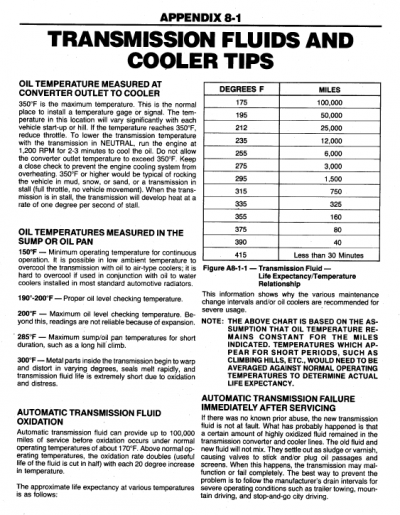From the GM chassis manual:

Also, if it's helpful specific to the 6L80:
In the February 2011 issue of Trailer Life magazine RV Clinic in response to a reader about the maximum transmission temperature allowed in a 2009 Chevy Silverado, the Tech Team had this response.
“General Motors’ in-house towing team expert provided RV Clinic with this statement: The maximum allowable automatic transmission fluid temperature is dictated by the transmission oil itself. The oil begins to degrade significantly above 270 degrees Fahrenheit, so we design vehicles so that in all but the most extreme conditions, the fluid temperature in the transmission sump stays below 270 degrees F.
We allow for up to 285 degrees F in extreme conditions (i.e. towing a trailer with combination loaded at GCWR in Death Valley). But for customer usage anywhere else in the country, even at GCWR, transmission sump temperature should stay well below 270 degrees F. Above this point, certain internal components, such as seals, begin to disintegrate rather quickly. Although newer synthetic fluids can withstand higher temperatures we still recommend this (270F) as a maximum temperature. "

Also, if it's helpful specific to the 6L80:
In the February 2011 issue of Trailer Life magazine RV Clinic in response to a reader about the maximum transmission temperature allowed in a 2009 Chevy Silverado, the Tech Team had this response.
“General Motors’ in-house towing team expert provided RV Clinic with this statement: The maximum allowable automatic transmission fluid temperature is dictated by the transmission oil itself. The oil begins to degrade significantly above 270 degrees Fahrenheit, so we design vehicles so that in all but the most extreme conditions, the fluid temperature in the transmission sump stays below 270 degrees F.
We allow for up to 285 degrees F in extreme conditions (i.e. towing a trailer with combination loaded at GCWR in Death Valley). But for customer usage anywhere else in the country, even at GCWR, transmission sump temperature should stay well below 270 degrees F. Above this point, certain internal components, such as seals, begin to disintegrate rather quickly. Although newer synthetic fluids can withstand higher temperatures we still recommend this (270F) as a maximum temperature. "

